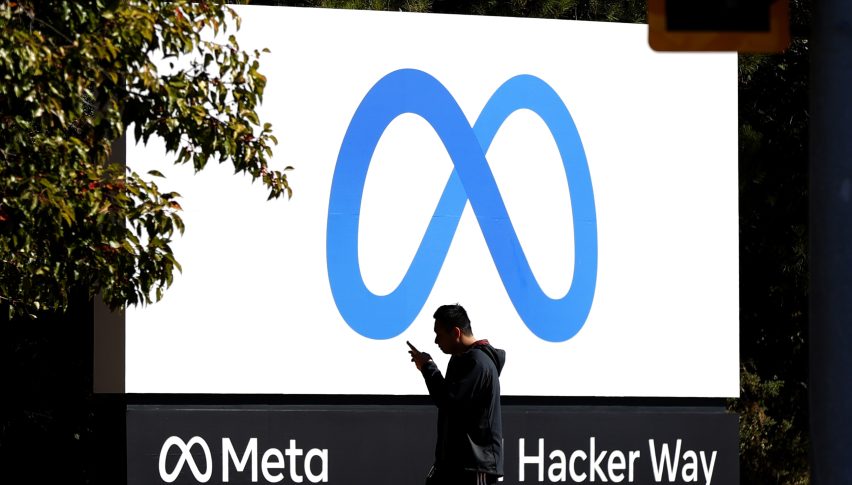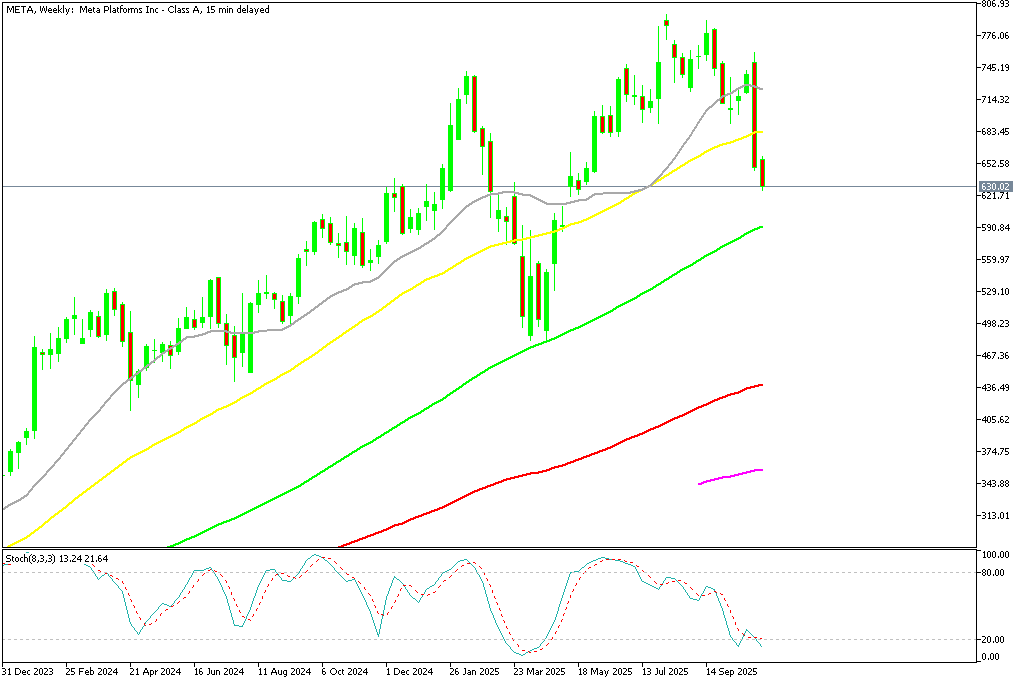Meta Stock Extends Decline, Down 15% Weekly Amid Soaring Costs – Is $700 Next?
Meta’s third-quarter results exposed part of the dark side of its AI ambitions, with soaring costs and a massive tax hit sparking a steep...

Quick overview
- Meta's Q3 results revealed significant financial strain, leading to a sharp stock selloff of over 16% in a week.
- Despite a 26% increase in revenue driven by strong ad demand, earnings per share fell to $1.05 due to soaring infrastructure costs and a $15.93 billion tax adjustment.
- The company anticipates further increases in capital expenditures, raising its 2025 forecast to between $70 billion and $72 billion, indicating ongoing financial pressure.
- While user engagement and ad performance remain strong, escalating costs threaten profitability and investor confidence.
Meta’s third-quarter results exposed part of the dark side of its AI ambitions, with soaring costs and a massive tax hit sparking a steep selloff and renewed doubts about its profit outlook.
Stock Slide Deepens as Confidence Wanes
After months of steady gains, Meta’s rally came to a screeching halt this week. Shares plunged more than 7% on Wednesday following the Q3 earnings release and have since fallen over 16% in a week. The selloff marks a sharp reversal for a stock that had been a market favorite through much of 2025.
Meta Stock Chart Weekly – The 50 SMA Has Been Broken
The downturn reflects deepening investor unease over Meta’s ballooning AI investments and evaporating margins. From its October 10 record high of $796, the stock has now dropped more than 20%, slipping below the critical 50-day moving average and heading toward the $700 mark — a technical breakdown that could signal further weakness ahead.
Earnings Beat Overshadowed by Collapsing Profits
Meta’s latest earnings report told a mixed story — strong revenue, weak returns. While total revenue climbed 26% year-over-year on robust ad demand, earnings per share fell to just $1.05, far short of expectations. The plunge was largely due to surging infrastructure costs and a staggering $15.93 billion non-cash tax adjustment under new U.S. regulations.
Although management downplayed the tax impact as a “one-time event,” investors focused on the bigger issue: Meta’s costs are accelerating faster than its growth. Operating income rose 18% to $20.5 billion, but total expenses ballooned 32% to $30.7 billion, driving the operating margin down to 40%.
AI Spending Pushes Financial Limits
Meta’s Q3 commentary made clear that spending is set to rise even further. The company raised its 2025 capital expenditure forecast to between $70 billion and $72 billion, citing expanded data center and AI compute requirements. Full-year expenses were also increased to $116–118 billion, well above prior projections.
Executives warned that 2026 will likely bring another wave of heavy investment as AI workloads expand, suggesting little relief ahead for profitability.
Strong Ad Growth, But Margins Under Siege
User engagement remains a bright spot — daily active users rose 8% to 3.54 billion, ad impressions increased 14%, and average ad prices gained 10%. But these positives were overshadowed by relentless cost pressure. Meta’s ad tools may be performing well, yet the profits they generate are increasingly consumed by the infrastructure needed to power them.
Conclusion: Meta’s Q3 results underscored a company caught between rapid innovation and fiscal strain. While its ad business and user base continue to thrive, ballooning AI expenses and a punishing tax hit have shaken investor confidence. Unless Meta reins in its spending or finds new efficiency gains, the recent stock correction could deepen before stability returns.
- Check out our free forex signals
- Follow the top economic events on FX Leaders economic calendar
- Trade better, discover more Forex Trading Strategies
- Open a FREE Trading Account


